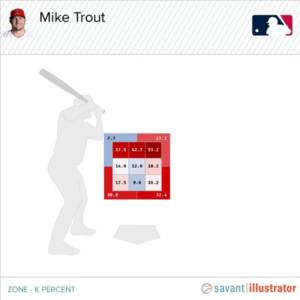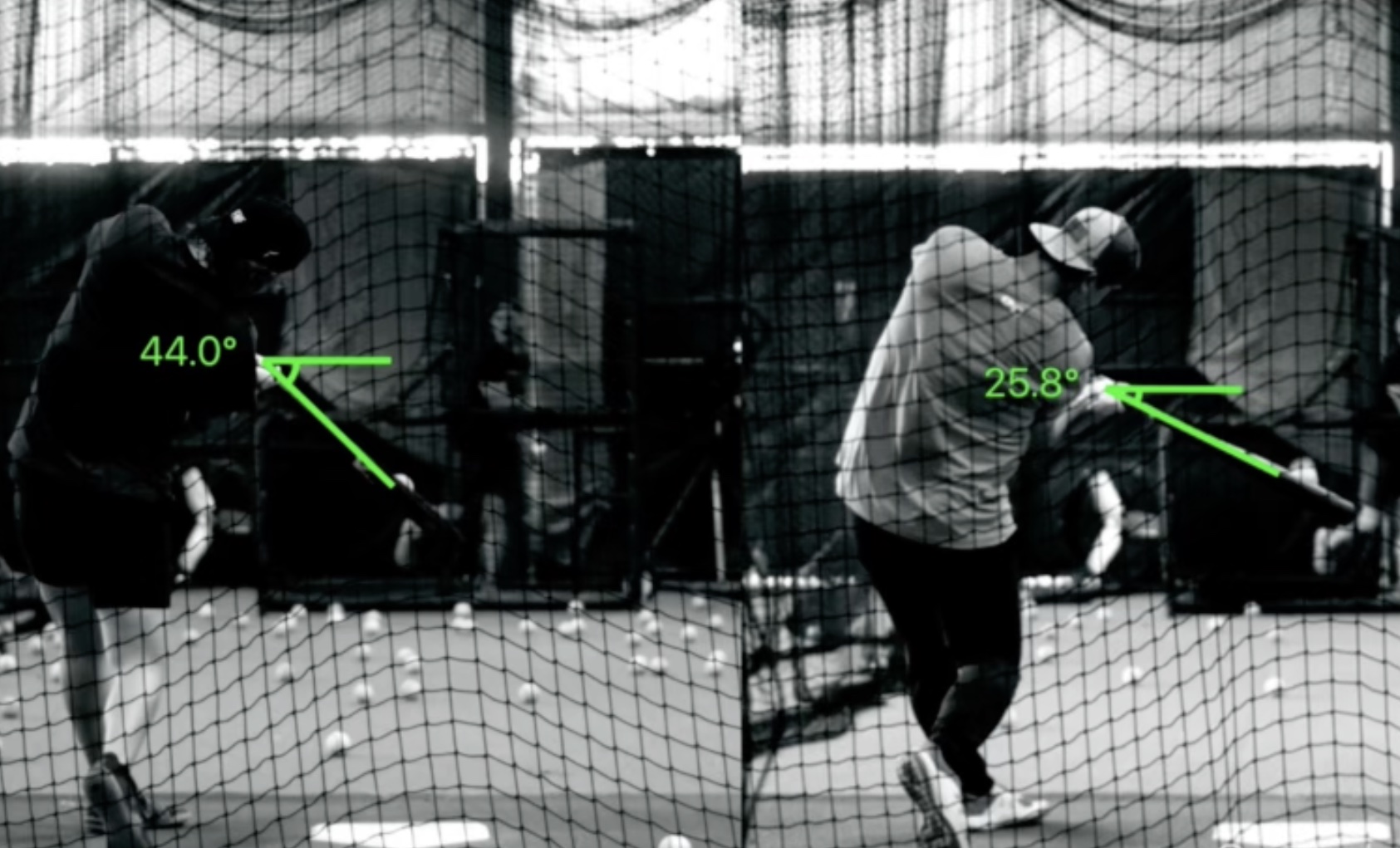
Vertical Bat Angle: A New Way to Look at Batter vs. Pitcher Matchups
Today’s guest post comes from Cressey Sports Performance – Florida associate hitting coordinator, Tyler Wolfe.
In the 8th inning of a recent NLDS game between the Dodgers and the Padres, the Padres went to their left handed closer, Josh Hader, who possesses one of the better fastballs in the game. The second batter he was set to face was a left-handed hitter, Cody Bellinger, but Dodgers manager Dave Roberts chose to pinch hit for Bellinger. His two most likely options he was deciding between were right handed batters Chris Taylor and Austin Barnes. Taylor would be the obvious choice to most because he is more of an offensive threat than Barnes. Roberts decided to go with Barnes, but unfortunately the move didn’t work out as Barnes flew out to center field to end the inning. Roberts was questioned about the unusual decision after the game and had this to say: “Hader’s tough on anyone but I felt that Austin’s short swing, flat path…Hader throws the 4-seam rise fastball, CT swings uphill, and Austin has had success against Hader.”
The old school approach when playing matchups from an offensive perspective is to put in a hitter who hits from the opposite side from the pitcher’s throwing arm. This has been the standard go-to matchup maker in baseball for a long time and makes complete sense because it is a much more comfortable at bat for most because the breaking balls will move into them instead of starting at or behind them and moving away. Today, I want to get a little more in depth on playing matchups to play to the hitters strengths instead of just putting in a righty hitter because it’s a lefty pitcher.
So back to the Dodgers story, what exactly is Roberts referring to when he says this? My guess is that he was referencing Vertical Bat Angle (VBA). It could also have to do with Attack Angle, but VBA is what I want to discuss today. What exactly is Vertical Bat angle you might be wondering if you haven’t heard of it before? The bat sensor company Blast Motion gives a good definition of what VBA is:
“Vertical Bat Angle is the angle of the bat with respect to horizontal at the moment of impact. Vertical Bat Angle is measured in degrees and provides the location of the barrel of the bat relative to the knob of the bat at impact. Vertical Bat Angle will be zero when the barrel of the bat and the knob are parallel to the ground. Vertical Bat Angle will be negative when the barrel of the bat is below the knob of the bat at impact.”
Here’s an example of two very good hitters with very different VBA’s to the exact same pitch: High School hitter Whitey Ossenfort on the left (Average -47.1 degrees of VBA) and Blue Jays minor leaguer Karl Ellison on the right (Average of -28.7 degrees of VBA).
Chris Taylor has a very steep average vertical bat angle of -39 degrees. Austin Barnes has an average vertical bat angle of -27.6 degrees. These two are drastically different in their swing paths and it leads to very different results. In my opinion, neither one is right or wrong, but as Dave Roberts’ quote implies, they can help to understand a hitter and what pitches and locations each guy might hit better than others.
I wanted to do a deeper dive into VBA to see if it could be an even better predictor of what kind of pitches and locations certain hitters could handle better than others. This could go for both the college and pro level because VBA is something that is very simple to measure. You could do so with just a camera if needed, but a Blast Motion or Diamond Kinetics sensor are probably easiest and both a relatively inexpensive option that gives you the data real time in both training and game.
The two examples I want to look at are two of the best hitters in baseball: Mike Trout and Juan Soto. They are the perfect examples for looking at VBA because they are at opposite ends of the spectrum when it comes to VBA, but both are very successful hitters. The Average VBA in Major League Baseball over the last 4 years (2019-2022) is -32.2 degrees according to SwingGraphs (subscription required, but $5 gets you full VBA’s from the last 4-5 seasons).
• Trout has had an average VBA of -37.1 degrees over that four year period
• Soto has had an average VBA of -27.4 degrees over that same four year period
With that in mind, let’s look at some of the Baseball Savant illustrations for both Soto and Trout so we can get a better idea of what parts of the zone they handle best and what their approach might be.
-The first row of charts below is K% for each guy in each section of the zone
-The second is Launch Angle for each guy in each section
-The third row is wOBA
-The last chart is Batting Average, for the old school folks in the crowd
BaseballSavant: Trout – K Rate BaseballSavant: Soto K-Rate
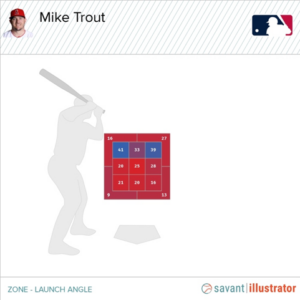
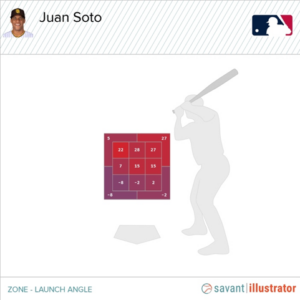
BaseballSavant: Trout – LA BaseballSavant: Soto – LA
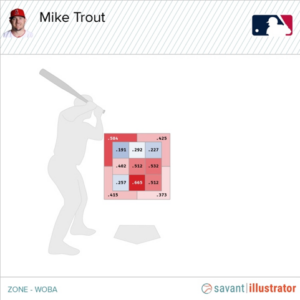
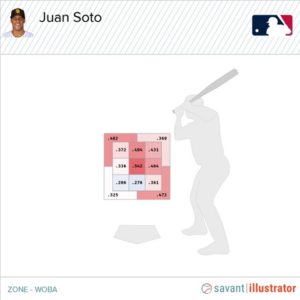
BaseballSavant: Trout – wOBA BaseballSavant: Soto – wOBA
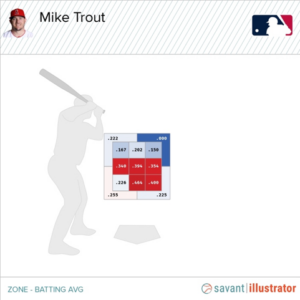
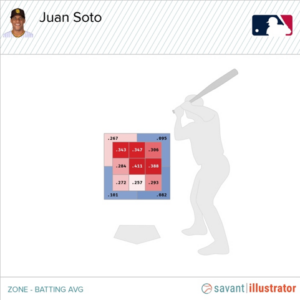
BaseballSavant: Trout – BA BaseballSavant: Soto – BA
These four charts all show very different results for both of these two elite hitters. Trout does much better in the lower 2/3 of the zone than he does in the top 1/3 in all four of the charts. Soto, on the other hand, is best in the top 2/3 of the zone. Not to say they can’t handle that section of the zone but they have much less success in that one section of the plate and it’s likely due to the path their bat takes to get to pitches at that height/location.
So, let’s go into a hypothetical game example. Let’s say it’s that same 8th inning situation in that Dodgers/Padres game with runners on first and second, with two outs and Josh Hader on the mound – and the Dodgers trailing 5-3. You have the Josh Hader scouting report and know that he throws nearly 70 percent fastballs and lives primarily glove side upper half of the zone with it (heatmap of his fastball over the last four years below).
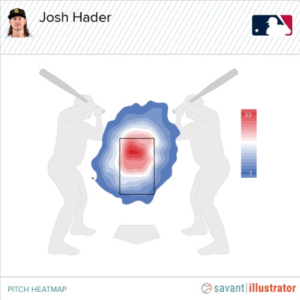
BaseballSavant – Hader FB Heatmap
You’re in Dave Roberts shoes and you have Soto and Trout on the bench (for some insane reason they’re on your team and not playing) and you need to send one of them up. Who would you think would have a better chance of success in this situation? The old school theory is to send up Trout because he’s a right handed batter. If I’m in the manager’s shoes and these are my options, I’m sending up Soto every time in that situation because of the type, percentage, and location of fastballs Josh Hader throws. For reference, Trout has never faced Hader and Soto has faced him three times and is 2 for 3 with 2 RBIs off of him.
Let’s look at one final example. We will go with almost the same situation, where we’re down 5-3 with runners on first and second, but let’s say only one out now in the 8th inning. You have the same two options for pinch hitters off the bench. This time, though, we’re facing Seattle and Luis Castillo is still throwing. Castillo has had a 51% ground ball rate over the last four years and does throw both a 4-seam and a sinker. His heatmap of all pitches over the last four years is below. Trout has three plate appearances against Castillo. He has a walk, a homer, and a single against him in those three plate appearances. Soto has had 10 plate appearances against Castillo and has also had some success, as he has two hits – including a homer and three walks. However, he does have a 67% ground ball rate against him.
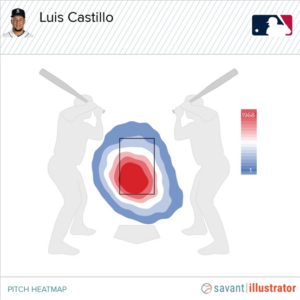
BaseballSavant: Castillo – FB Heatmap
Once again, the old school approach would say to send up Soto in this situation because he is a left handed batter against a right handed arm. With what we have looked at so far, which guy are you going with if you’re managing? For me, it’s Trout every time because he is going to be able to get the ball in the air more, especially off a guy who strength is to throw more pitches down in the zone. From an offensive perspective, the worst thing that could happen in this situation is a double play, and Soto has a much tougher time elevating balls at the bottom of the zone, as you can see by his launch angle chart (above). This is why I would send up Trout in this situation.
As I close out this article, I want to emphasize that VBA is not a perfect stat for measuring what pitches and locations guys handle best because there is so much more that goes into hitting, most notably timing and approach. It is, however, a great measurement for getting a better understanding of what your players swing path looks like and how this may affect their ball flight and contact rates. VBA changes for each hitter based on height and location. For pitches up in the zone (especially with fastballs), hitters need a flatter bat path (VBA closer to 0), and for pitches lower in the zone, they need a much steeper bat path. Like I said, it doesn’t mean that they can’t handle the opposite pitch of what their average bat angle is, but it does make it harder to square it up because of the direction of their bat path to the pitch. Soto has a tough time getting the low pitch off the ground and Trout is susceptible to hitting the high pitch too high in the air.
There are many factors that go into VBA, but we will have to save that for another article. Some of those factors include:
- Height/Location of the pitch
- Height/Posture of the hitter
- Timing: If a hitter is either on time, early, or late this will make a difference
- A hitter’s mobility, strength, and stability all the way up the chain
Conclusion
In my opinion the best thing that understanding a player’s VBA can help with is creating a better approach for each hitter. Mike Trout probably isn’t going to look to swing up in the zone until he has to with two strikes or if a situation allows for it. Juan Soto probably is going to look for a pith up in the zone. This isn’t to say that they don’t train to work on these locations they struggle with; my guess is that they actually spend a lot of time working on these weaknesses. There are videos of Trout talking doing about some high tee work trying to stay on top and flat and hit ground balls up the middle. This seems like a great drill to help him feel what he needs to do in order to get to these balls up in the zone when he has to hit them. As any great hitter would agree, having a good approach is likely the most important thing to being a good hitter but it’s hard to individualize that approach if you don’t know what pitches/locations a hitter can handle best.
*A big thanks to CSP Associate Pitching Coach Matt Ellmyer for the idea to put this into a blog, and for helping with some of the research as well.
About the Author
Tyler Wolfe serves as Associate Hitting Coordinator at CSP-FL. Prior to joining the CSP staff, he worked as a minor league hitting coach for the St. Louis Cardinals. Tyler played baseball at Des Moines Area CC and Kansas State University as an infielder and pitcher before being drafted as an infielder by the Houston Astros in 2016. He went on to play four years of professional baseball before starting his coaching career. His first coaching role was as the assistant hitting coordinator for the Minnesota Blizzard, a premier Midwest youth and high school travel organization. Tyler holds a B.S in Psychology from Kansas State and a M.S in Sports Management from Indiana State University.


